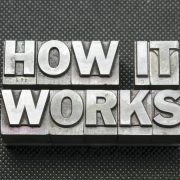Finding Investments for Your Self-Directed IRA
Understanding the Types of Assets your Self-Directed IRA can invest in
Self-directed IRA investors are taking advantage of the tremendous flexibility that IRS rules allow – by investing in nearly anything you can imagine:
- Raw land
- Condos/Townhomes
- Single family homes
- Commercial buildings
- Trust deeds/mortgage notes
- Unsecured notes
- Precious metals
- LLC’s
- Tax Liens/Deeds
- Privately held companies
- And much more…
Indeed, the IRS only prohibits you from investing IRA assets in a few specific things: Life insurance, collectibles, gems, jewelry, and certain forms of precious metals. You also can’t pledge your IRA as security for a loan.
With a self-directed IRA, you are the pilot. You aren’t delegating your investment decisions to a mutual fund manager, for example. You retain full control of the transactions your IRA makes. As a third-party administrator, we just execute your direction on your behalf, consistent with a few basic rules against self-dealing.
But how do you know what to invest in? How do you find investments for your account?
There’s no cut-and-dried answer. But we have a few principles for you to keep in mind.
Capitalize on your strengths.
Concentrate on making investments in fields in which you have a unique competitive advantage to other market players. You may, for example, have particular expertise in flipping houses – or landlording a rental property. Or you may have ready access to a number of reliable real estate investors willing to pay you a premium for the use of your money for a 12-month “hard-money” loan. All these things are perfectly legitimate investments for your self-directed IRA.
Develop Market Intelligence Sources
Very few people achieve astounding self-directed IRA investment success on their own. Ally yourself with the best, most informed experts, or teams of experts, in your chosen investment area as you can. This could be a great real estate agent with outstanding knowledge of your neighborhood and a great network of buyers and sellers for you to tap into. It could be someone in your county government who can keep you posted on the latest opportunities for tax deed or lien investing.
Maintain Liquidity
Remember that self-directed IRA accounts limit your ability to contribute new money in any given year to $5,500, or $6,500 if you are over age 50. This could be a problem if you haven’t kept enough reserves in your IRA to cover expenses.
This means you’ll need to maintain access to some liquidity, not just in your general portfolio, but specifically within your IRA or other retirement account, and/or have a non-recourse lender at the ready who understands and lends to self-directed IRA accounts.
Begin With the End In Mind
Have an exit plan for your self-directed IRA investments, just as you would with other investments. Some assets, like real estate, aren’t very liquid. So you may be better off holding them in a self-directed Roth IRA account, since Roth IRAs don’t require you to begin liquidating the account after you turn 70½. If you choose to hold illiquid investments in a traditional account or other tax deferred vehicle, just do a bit of planning ahead to meet any liquidity needs and minimize your overall tax bill.
Getting Started
Getting started in self-directed IRAs is very simple: Just call American IRA at 866-7500-IRA (472), and we will get you everything you need to get started. Simply put, open an account, fund your account , and find a suitable investment. We’ll work with your team of professionals to facilitate the transaction, and ensure that the assets are properly titled.







